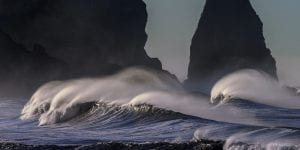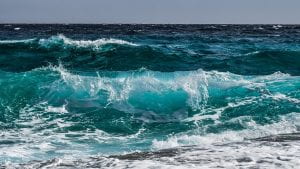Hello! It’s Ryder and this is week four of the student blogging challenge. I thought that this week’s challenge is especially exciting because we get to blog about whatever interests us. The possibilities were endless but after contemplating, I realized that I have always been interested in the topic…what makes the perfect “surf-able” wave. This subject intrigued me when I first started surfing and I have yet to look into it. I then figured that there was no better time than now to do it. Every surfer has his/her preference on what makes a perfect wave, the size and intensity, and the kind of break.
The first step to answering this question is to find out what the science is behind something as simple as a wave. In order for a surf-able wave to form, there either has to be a very strong wind swell or a ground swell which is most commonly caused by storms that take place thousands of miles offshore.


Once the wave has reached the shore, where and how it breaks all depends on the ocean floor. There are three different possibilities for where a wave breaks. The first break that can handle the biggest waves is a reef break. A reef break is when the wave suddenly reaches shallow reef/rock and peels down the reef depending on which direction the swell is coming from.

The second break is a point break. Point breaks peel one direction along the diagonal shoreline of a body of land. Usually they are points of capes hence the name “point break”.

The final break is a beach break. Beach breaks tend to be more gentle and deal with smaller waves more proficiently. If a large swell reaches this break it will tend to be more sloppy and less clean. Although the big advantage to this type of break is the bottom is sand therefore making the wipeouts more pleasant.

Once the wave reaches shallow waters a face starts to form. The water needs to be half as deep as the wave is tall before it will start to break. The direction of the winds also have a major impact on the wave. Usually, the less wind the better if you are wanting an untouched wave but there are many other preferences for the perfect wind direction and speed. An onshore wind is better if attempting aerials due to the fact that it is said to blow you back onto the wave. Off-shore winds would help construct a “perfect” looking wave or a barreling wave.
Now that we have learned about the nature and science of a wave, its time to answer my question; what would make the perfect wave. After speaking with an experienced surfer, I came to the conclusion that the perfect man-made wave would be similar to a ground swell that would happen in nature as well as being very similar to Kelly Slater’s wave pool. The only changes I would make would be to have machinery to make the wave double the size and to be able to change the contours of the ground to mock a never ending reef break. The final addition would be man-made off shore winds to groom the wave to perfection.
Overall, I was very engaged in the making of the blog post and I had a lot of fun researching this topic. Make sure to comment your thoughts below.
Bye!

[…] Ryder explored the topic of what makes the perfect “surf-able” wave. […]
[…] Ryder explored the sphere of what makes the supreme “surf-able” wave. […]
[…] Ryder explored the subject of what makes the supreme “surf-ready” wave. […]
[…] Ryder explored the topic of what makes the perfect “surf-able” wave. […]
[…] Ryder explored the subject of what makes the right “surf-able” wave. […]
[…] Ryder explored the topic of what makes the perfect “surf-able” wave. […]